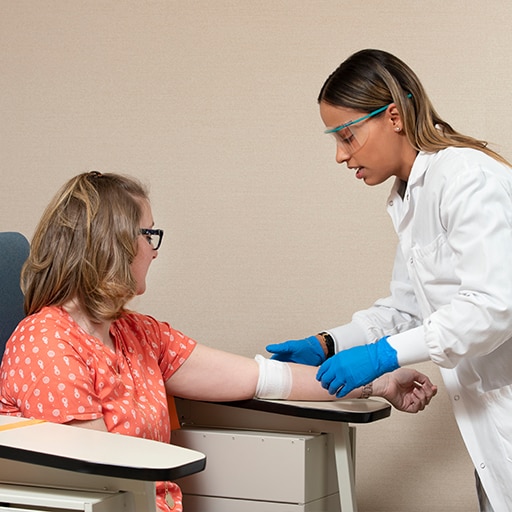6 Easy Facts About Northeast Medical Institute - New Haven Campus Phlebotomy Course & Cna Class Explained
6 Easy Facts About Northeast Medical Institute - New Haven Campus Phlebotomy Course & Cna Class Explained
Blog Article
Little Known Questions About Northeast Medical Institute - New Haven Campus Phlebotomy Course & Cna Class.
Table of ContentsSome Known Details About Northeast Medical Institute - New Haven Campus Phlebotomy Course & Cna Class The 10-Minute Rule for Northeast Medical Institute - New Haven Campus Phlebotomy Course & Cna ClassNortheast Medical Institute - New Haven Campus Phlebotomy Course & Cna Class Can Be Fun For AnyoneThe Greatest Guide To Northeast Medical Institute - New Haven Campus Phlebotomy Course & Cna Class9 Simple Techniques For Northeast Medical Institute - New Haven Campus Phlebotomy Course & Cna ClassHow Northeast Medical Institute - New Haven Campus Phlebotomy Course & Cna Class can Save You Time, Stress, and Money.
Nonetheless, using such tools should be accompanied by other infection avoidance and control methods, and training in their usage. Not all safety tools are appropriate to phlebotomy. Prior to selecting a safety-engineered gadget, individuals need to completely check out readily available devices to establish their appropriate usage, compatibility with existing phlebotomy techniques, and efficacy in shielding staff and clients (12, 33).For setups with low resources, expense is a motoring consider purchase of safety-engineered devices - CNA Courses. Where safety-engineered devices are not offered, skilled use a needle and syringe is acceptable. Unexpected direct exposure and certain info regarding an occurrence ought to be taped in a register. Support services ought to be promoted for those that go through unintended direct exposure.
labelling); transport conditions; interpretation of outcomes for scientific administration. In an outpatient department or clinic, offer a devoted phlebotomy cubicle containing: a tidy surface with two chairs (one for the phlebotomist and the other for the person); a hand wash container with soap, running water and paper towels; alcohol hand rub. In the blood-sampling space for an outpatient department or facility, offer a comfortable reclining sofa with an arm remainder.
9 Simple Techniques For Northeast Medical Institute - New Haven Campus Phlebotomy Course & Cna Class
Guarantee that the signs for blood sampling are clearly specified, either in a written protocol or in recorded directions (e.g. in a research laboratory kind). At all times, follow the methods for infection avoidance and control noted in Table 2.2. Infection prevention and control techniques. Accumulate all the equipment needed for the treatment and area it within risk-free and easy reach on a tray or cart, ensuring that all the items are clearly visible.
Introduce on your own to the person, and ask the person to mention their complete name. Inspect that the lab form matches the patient's identification (i.e. match the individual's information with the laboratory form, to make certain exact identification).
Make the individual comfortable in a supine placement (if possible). The patient has a right to reject a test at any type of time before the blood tasting, so it is essential to ensure see that the individual has recognized the treatment - PCT Training.
Some Known Factual Statements About Northeast Medical Institute - New Haven Campus Phlebotomy Course & Cna Class
Prolong the person's arm and inspect the antecubital fossa or forearm. Find a capillary of an excellent dimension that is noticeable, straight and clear.
DO NOT place the needle where capillaries are drawing away, since this boosts the possibility of a haematoma. Finding the capillary will help in identifying the appropriate size of needle.
Specimens from central lines lug a danger of contamination or wrong laboratory test results. It is appropriate, but not optimal, to draw blood specimens when initial presenting an in-dwelling venous tool, prior to linking the cannula to the intravenous fluids.
Northeast Medical Institute - New Haven Campus Phlebotomy Course & Cna Class for Beginners
Allow the location to dry. Failure to allow enough contact time increases the threat of contamination. DO NOT touch the cleaned up website; specifically, DO NOT place a finger over the capillary to assist the shaft of the exposed needle. It the website is touched, repeat the sanitation. Carry out venepuncture as follows.
Ask the patient to form a clenched fist so the capillaries are much more noticeable. Go into the vein quickly at a 30 level angle or much less, and remain to introduce the needle along the capillary at the most convenient angle of entrance - PCT Training. Once adequate blood has actually been accumulated, launch the tourniquet prior to taking out the needle
The Basic Principles Of Northeast Medical Institute - New Haven Campus Phlebotomy Course & Cna Class
Withdraw the needle gently and use mild pressure to the website with a clean gauze or dry cotton-wool ball. Ask the individual to hold the gauze or cotton woollen in position, with the arm extended and elevated. Ask the person NOT to flex the arm, due to the fact that doing so creates a haematoma.

Fascination About Northeast Medical Institute - New Haven Campus Phlebotomy Course & Cna Class
Do not press the syringe plunger because added stress boosts the danger of haemolysis. Where feasible, keep televisions in a shelf and relocate the rack in the direction of you. Inject downwards right into the appropriate coloured stopper. DO NOT eliminate the stopper due to the fact that it will release the vacuum cleaner. If the example tube does not have a rubber stopper, infuse very slowly right into the tube as minimizing the stress and velocity utilized to transfer the sampling decreases the risk of haemolysis.

Report this page